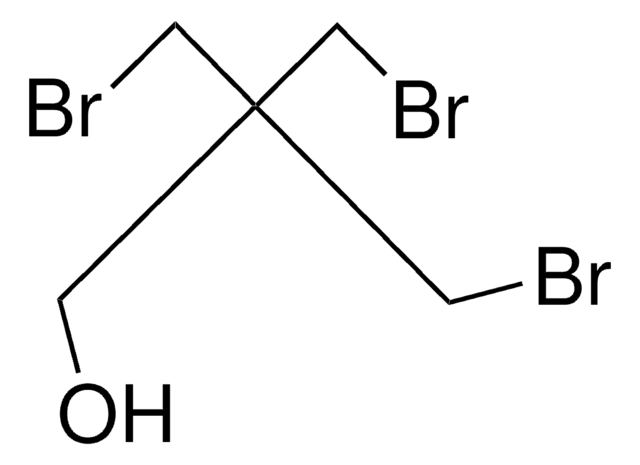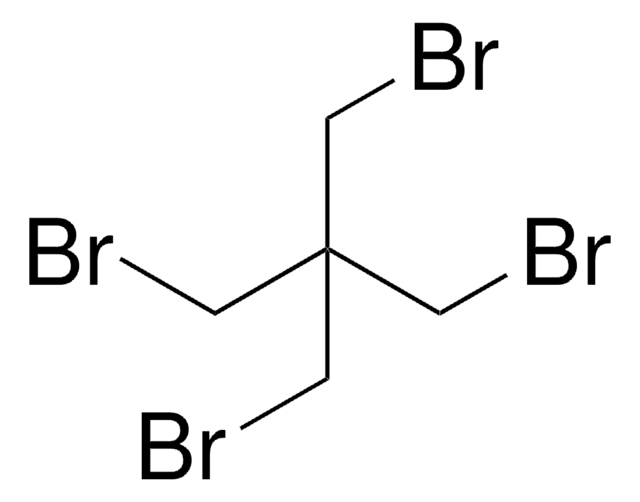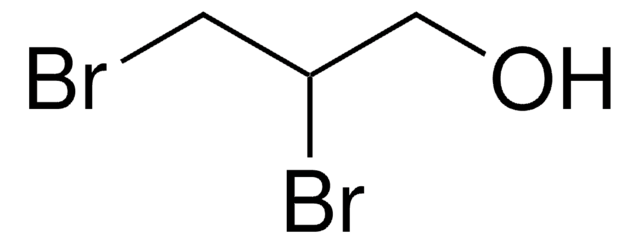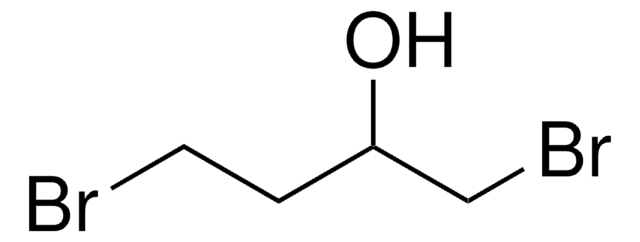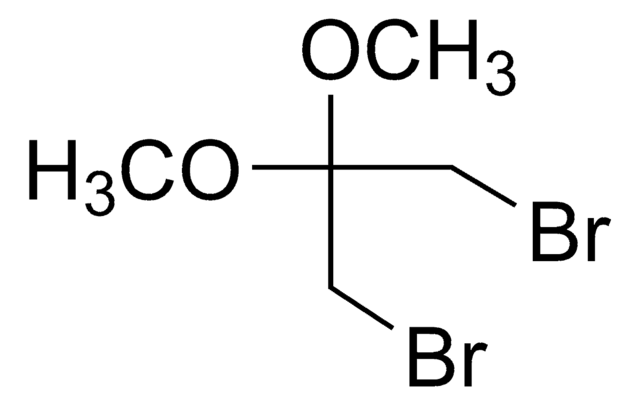301930
2,2-Bis(bromomethyl)-1,3-propanediol
98%
Synonym(s):
1,3-Dibromo-2,2-bis(hydroxymethyl)propane, Dibromoneopentyl glycol, Pentaerythritol dibromide, Pentaerythritol dibromohydrin
Sign Into View Organizational & Contract Pricing
All Photos(3)
About This Item
Linear Formula:
HOCH2C(CH2Br)2CH2OH
CAS Number:
Molecular Weight:
261.94
EC Number:
MDL number:
UNSPSC Code:
12162002
PubChem Substance ID:
NACRES:
NA.23
Recommended Products
vapor pressure
10 mmHg ( 178 °C)
Assay
98%
form
solid
mp
112-114 °C (lit.)
SMILES string
OCC(CO)(CBr)CBr
InChI
1S/C5H10Br2O2/c6-1-5(2-7,3-8)4-9/h8-9H,1-4H2
InChI key
CHUGKEQJSLOLHL-UHFFFAOYSA-N
Related Categories
Signal Word
Danger
Hazard Statements
Precautionary Statements
Hazard Classifications
Carc. 1B - Muta. 1B
Storage Class Code
6.1C - Combustible acute toxic Cat.3 / toxic compounds or compounds which causing chronic effects
WGK
WGK 2
Personal Protective Equipment
dust mask type N95 (US), Eyeshields, Gloves
Choose from one of the most recent versions:
Already Own This Product?
Find documentation for the products that you have recently purchased in the Document Library.
Customers Also Viewed
J Sun
Biometrics, 55(4), 1273-1276 (2001-04-21)
Historical control data are often available in carcinogenicity studies and are included for testing dose effects in current studies. A new method is developed for incorporating the historical control information into a dose effect test. The method generalizes the test
K A Treinen et al.
Fundamental and applied toxicology : official journal of the Society of Toxicology, 13(2), 245-255 (1989-08-01)
The effect of 2,2-bis(bromomethyl)-1,3-propanediol (BMP) on reproduction in Swiss CD-1 mice was evaluated by use of a continuous breeding protocol. BMP was administered in the feed at 0.1, 0.2, and 0.4% concentrations. Both male and female F0 mice (20 pairs
Shai Ezra et al.
Journal of contaminant hydrology, 86(3-4), 195-214 (2006-05-13)
This study investigates the mechanisms controlling the distribution of 3-bromo-2,2-bis(bromomethyl)propanol (TBNPA) and 2,2-bis(bromomethyl)propan-1,3-diol (DBNPG) in a fractured chalk aquitard. An extensive monitoring program showed a systematic decrease in the TBNPA/DBNPG ratio with distance from the contamination source. Sorption of TBNPA
Shai Ezra et al.
Chemosphere, 79(4), 476-481 (2010-03-02)
The mechanism and kinetics of the spontaneous decomposition of 2,2-bis(bromomethyl)propan-1,3-diol (DBNPG) and its decomposition daughter products were determined in aqueous solution at a temperatures range between 30 and 70 degrees C and pH from 7.0 to 9.5. DBNPG decomposition in
Simone I Hoehle et al.
Drug metabolism and disposition: the biological fate of chemicals, 37(2), 408-416 (2008-11-26)
2,2-Bis(bromomethyl)-1,3-propanediol (BMP) is a brominated flame retardant, previously shown to be a multisite carcinogen in experimental animals. Studies were performed to characterize the dispositional and metabolic fate of BMP after oral or intravenous administration to male Fischer-344 rats. After a
Our team of scientists has experience in all areas of research including Life Science, Material Science, Chemical Synthesis, Chromatography, Analytical and many others.
Contact Technical Service